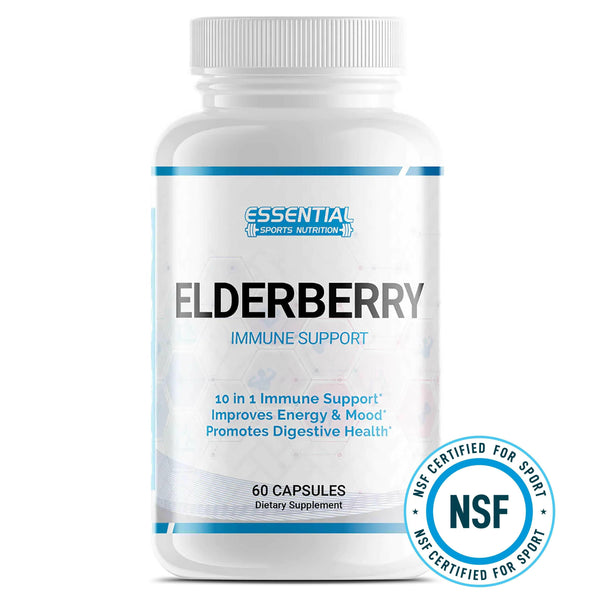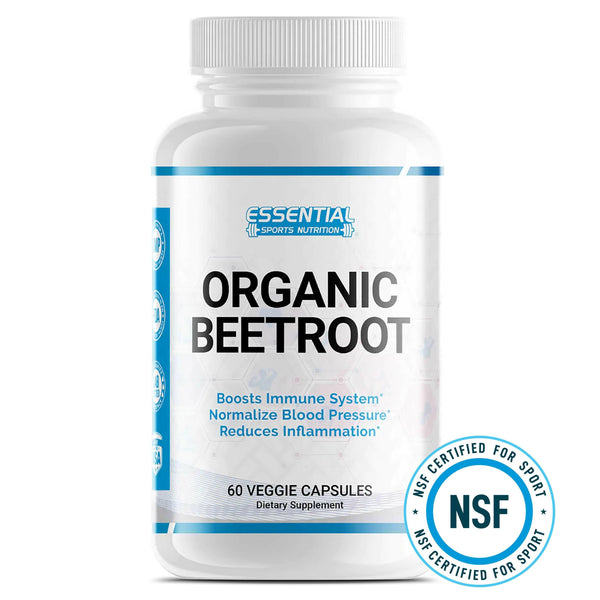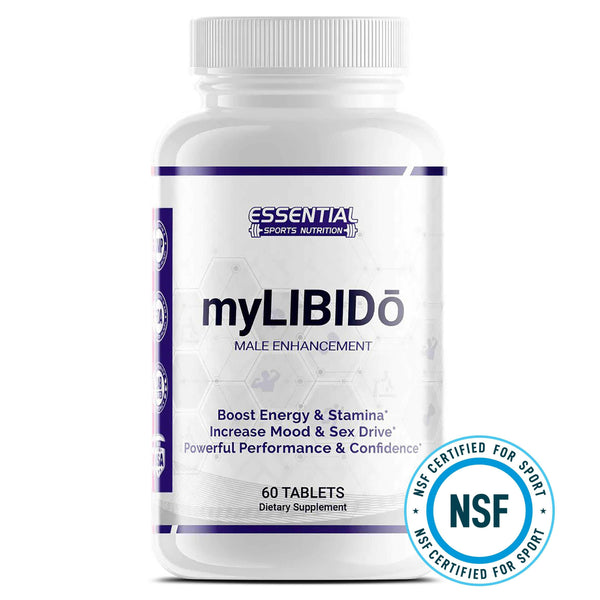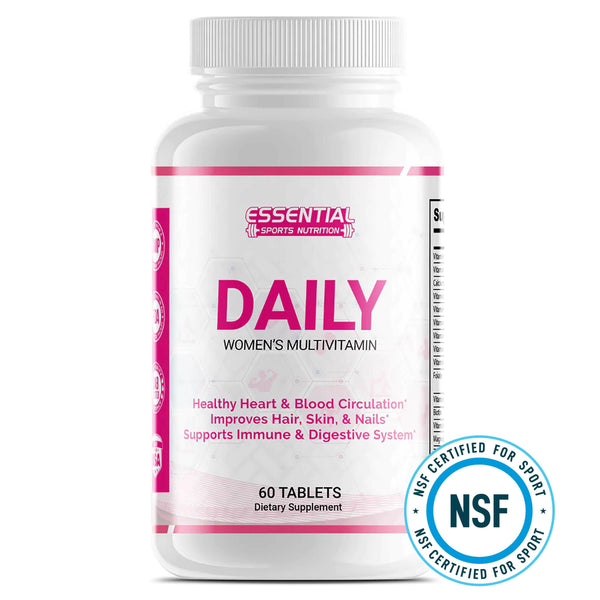The Paleo Diet for Beginners: What to Eat, What to Avoid, and Why
Starting your journey towards better health can often feel overwhelming, especially with the multitude of diet plans available today. You might be searching for a diet that not only helps you lose weight but also boosts your overall well-being.
The Paleo Diet, focused on consuming whole, unprocessed foods, mirrors the eating habits of our early ancestors and has gained popularity for its simplicity and potential health benefits.
One intriguing fact about the Paleo Diet is that it emphasizes foods high in nutritional value and healthy fats. This approach to eating aims to align with our genetic makeup by including meals that would have been accessible during the Paleolithic era.
This article will guide you through everything you need to know about starting the Paleo Diet as a beginner in dieting. From essential meal plans and food lists to understanding its benefits and potential risks - we've got you covered.
Discover how making this shift in your dietary habits could lead to meaningful changes in both your physical appearance and internal health metrics.
Key Takeaways
- The Paleo Diet focuses on eating whole, unprocessed foods like lean meats, fruits, vegetables, nuts, and seeds while avoiding grains, legumes, dairy products, and processed foods.
- Foods rich in nutrients such as grass - fed meat, fresh fruits and vegetables support weight loss and help improve overall health by aligning our diet closer to what our ancestors ate.
- Modifying the Paleo Diet by including certain non-traditional foods can make it more enjoyable and sustainable for long-term health goals without losing focus on whole food consumption.
- Drinking choices on the Paleo Diet include water, black coffee without sugar or cream, tea (green or herbal), coconut water for hydration packed with electrolytes. Avoid sugary drinks and artificial sweeteners to stay true to Paleo principles.
- Potential risks of following the Paleo Diet include nutritional deficiencies from cutting out whole food groups like grains and dairy; plus higher costs associated with purchasing organic produce and grass-fed meats.
The Core Principles of the Paleo Diet

The Paleo diet takes inspiration from our hunter-gatherer ancestors. It focuses on eating foods that were available during the Stone Age. This diet eliminates modern processed foods believed to be the root of many chronic conditions.
Eating like early humans means consuming lots of lean meats, fish, fruits, vegetables, nuts, and seeds. The goal is to align our eating habits with our genes for better health and weight management.
Key principles include avoiding dairy products, grains like wheat and rye, legumes such as beans and peanuts, along with highly processed foods and sugars. Instead, the diet promotes a high intake of protein and fiber from whole foods.
This not only supports weight loss but also improves insulin sensitivity and lowers blood pressure levels. Embracing these dietary choices can lead to a balanced intake of essential nutrients without the need for counting calories or strict meal plans.
Essential Foods to Eat on the Paleo Diet

Eating right is key on the Paleo Diet. It focuses on foods our hunter-gatherer ancestors might have eaten.
- Grass-fed Meat: These meats are closer to what ancient humans consumed, packed with omega-3 fatty acids and fewer saturated fats compared to conventional meats.
- Fresh Fruits and Vegetables: They are the cornerstone of the Paleo Diet, offering essential vitamins, minerals, and antioxidants for optimal health.
- Fish and Seafood: Rich in omega-3 fatty acids, they support heart health and reduce inflammation in the body.
- Eggs: A versatile source of high-quality protein that also provides vitamin D and B12, vital for energy and bone health.
- Nuts and Seeds: Great for snacks, they are filled with healthy fats, fiber, and proteins but should be eaten in moderation due to high calorie content.
- Healthy Oils (Coconut Oil and Olive Oil): These oils are encouraged for cooking or dressing salads due to their healthy fat composition which supports brain function and heart health.
Foods to Avoid on the Paleo Diet
The Paleo Diet encourages eating like our hunter-gatherer ancestors. This means some modern foods are not allowed. Here's a list of what to steer clear of:
- Grains: This includes bread, rice, pasta, and cereal grains. These were not part of the Paleolithic era diet and are seen as contrary to Paleo principles because they can lead to inflammation and other health issues.
- Legumes: Beans, lentils, peanuts, and peas are off-limits. Despite their nutritional value, they contain antinutrients like lectins and phytates which can affect digestion and absorption of nutrients.
- Dairy Products: Milk, cheese, yogurt, and butter are excluded from the Paleo diet. These were not consumed during the Paleolithic era and can be problematic for people with lactose intolerance or dairy sensitivity.
- Processed Foods: Chips, candy, margarine, and ready-to-eat meals are a definite no. They're high in unhealthy fats, sugars, artificial ingredients, and preservatives.
- Sugary Drinks and Artificial Sweeteners: Soda, fruit juices with added sugar, and diet drinks containing artificial sweeteners disrupt natural sugar balance and offer no nutritional benefit.
- Vegetable Oils: Canola oil, soybean oil, corn oil, and others high in omega-6 fatty acids are discouraged due to their potential impact on heart health.
- Candy: All forms of processed sweets are to be avoided due to their high sugar content that can lead to obesity and other metabolic disorders.
Modified Paleo Diets: Sensible Indulgences

People often tweak the Paleo diet to fit their lifestyle and preferences. This means allowing some foods not traditionally part of the hunter-gatherer diet. These sensible indulgences include dark chocolate or dairy products like cheese, considered off-limits in strict Paleo circles.
Including these foods can make the diet more enjoyable and sustainable for long-term health goals.
Some modified versions also incorporate legumes, grains, or even a small amount of processed food. This approach acknowledges the benefits of certain modern foods while maintaining a focus on whole, nutrient-dense options.
It's all about finding a balance that supports your body's needs without feeling too restricted.
What to Drink on the Paleo Diet

Choosing drinks on the Paleo diet means sticking to simple, natural choices. These options help keep your hydration levels up without adding unwanted sugars or artificial ingredients.
- Water: It's the most important drink for staying hydrated. Water supports every function of your body and contains no calories or additives.
- Black Coffee: Enjoy it without sugar or cream. Black coffee is rich in antioxidants that can improve health when consumed in moderation.
- Tea: Green, black, and herbal teas are great choices. Ensure they're unsweetened to comply with Paleo guidelines.
- Coconut Water: This is a hydrating choice packed with electrolytes. Opt for fresh coconut water without added sugars to get the most benefits.
- Bone Broth: Rich in nutrients like collagen, bone broth can be sipped warm. It's soothing and supports digestion and joint health.
- Homemade Juices: Make these from fruits and vegetables only. Avoid adding sweeteners to keep them Paleo-friendly.
- Almond Milk and Coconut Milk: Use these as dairy alternatives. Choose unsweetened versions for drinks or smoothies.
Risks and Downsides of the Paleo Diet

Cutting out whole grains and dairy from your diet can lead to nutritional deficiencies. These foods are key sources of vitamins and minerals. Without them, you might miss out on essential nutrients like calcium and vitamin D.
Your body needs these for strong bones and overall health.
Eating a lot of red meat, as recommended by the paleo diet, could increase heart disease risk. Studies suggest that high consumption of red meat is linked with higher cholesterol levels.
Balancing your diet carefully to avoid too much red meat might help manage this risk. Protein deficiency can also be a concern if the diet isn't properly balanced, leading to muscle loss and fatigue.
A Sample of a One-Week Paleo Menu
Discover a one-week Paleo menu filled with delicious, health-focused meals. Each day offers new flavors and nutrition to keep your diet exciting and beneficial.
Monday's Menu
Monday kicks off with a nourishing breakfast of scrambled eggs, sautéed spinach, and slices of avocado. This combination ensures a rich intake of protein, healthy fats, and vitamins to start the day strong.
For lunch, enjoy a large salad topped with grilled chicken breast, mixed greens, cherry tomatoes, and a dressing made from olive oil and lemon juice. This meal packs in nutrients essential for energy and overall health.
Dinner on Monday features grass-fed beef burgers (without the bun) served alongside roasted sweet potatoes and steamed broccoli. Grass-fed beef is preferred for its higher levels of omega-3 fatty acids compared to regular beef.
Sweet potatoes provide a comforting yet nutritious side that's high in fiber and vitamins A and C.
Tuesday's Menu
Tuesday's menu keeps the Paleo spirit alive with a mix of protein, veggies, and healthy fats. For breakfast, enjoy scrambled eggs with spinach cooked in macadamia oil. This meal kicks off the day with plenty of energy.
Lunch brings a vibrant chicken salad mixed with fresh greens and topped with nuts for that crunchy texture.
Come dinnertime, savor grilled salmon seasoned to perfection. Serve it alongside steamed broccoli and carrots for a colorful plate full of nutrients. This combination supports blood sugar management while satisfying hunger in line with Paleo guidelines.
For snacks, almonds or slices of apple can keep you going through your busy day without straying from your diet plan.
Wednesday's Menu
Wednesday's menu kicks off with a hearty breakfast of scrambled eggs, spinach, and slices of avocado. This combination offers a mix of protein, healthy fats, and vital nutrients to start the day strong.
For lunch, enjoy grilled chicken salad topped with nuts and seeds for added crunch and nutrition. These meals keep in line with Paleo principles by focusing on whole foods such as meat, vegetables, and healthy fats.
Dinner brings pan-seared salmon served alongside roasted sweet potatoes and steamed broccoli. This meal is not only delicious but also packs a punch of omega-3 fatty acids from the salmon, complex carbohydrates from the sweet potatoes, and essential vitamins from the broccoli.
Snacks during the day can include fresh berries or raw vegetables to keep energy levels up without straying from Paleo guidelines.

Thursday's Menu
For breakfast on Thursday, enjoy a plate of scrambled eggs mixed with fresh spinach and diced tomatoes. Pair this with a side of crispy bacon for added flavor. This meal combines protein and vitamins to kickstart your day the paleo way.
For lunch, prepare a large salad with mixed greens, avocado slices, grilled chicken breast, and a handful of walnuts. Drizzle olive oil and lemon juice over the top for dressing. This lunch packs nutrients that fuel your body without feeling too heavy.
Dinner offers grass-fed steak seasoned with herbs and garlic, served alongside roasted Brussels sprouts and sweet potato wedges. This combination delivers a hearty meal rich in micronutrients and satisfying flavors.
If you're looking for a snack or dessert option, try apple slices dipped in almond butter for something sweet yet healthy.
Friday's Menu
Breakfast on Friday includes a delicious smoothie made with berries, spinach, and almond milk. This mix is perfect for those following the paleo diet and aiming for a nutritious start to their day.
Add in some chia seeds for an extra boost of energy.
For lunch, enjoy a hearty salad with grilled chicken breast, mixed greens, avocado slices, and a sprinkle of nuts. Dress it with olive oil and lemon juice for flavor. This meal is packed with proteins and healthy fats that align well with the paleo principles.
It keeps you full and satisfied throughout the afternoon.
Saturday's Menu
Saturday's menu for the Paleo diet is all about mixing whole foods to create nutritious meals. Start your day with scrambled eggs and avocado, followed by a mid-morning snack of fresh berries and nuts.
For lunch, grill some grass-fed steak alongside a big salad filled with leafy greens and colorful vegetables. Enjoy an afternoon bite of sliced apples with almond butter. Dinner can be roasted chicken thighs with steamed broccoli and sweet potato on the side.
Keep in mind, this day avoids grains, peanut butter, and processed foods entirely. Instead, it focuses on meats, vegetables, fruits, nuts, seeds, and healthy oils to keep you full and energized.
This way of eating supports weight loss and improves overall health without making you feel restricted or hungry.
Sunday's Menu
For breakfast on Sunday, enjoy scrambled eggs with spinach and a side of fresh berries. Eggs provide high-quality protein while the spinach offers vitamins A and C. Berries add a sweet touch without the added sugar.
This meal starts your day with energy.
Lunch features grilled chicken salad with avocado and walnuts. The chicken gives you lean protein, essential for muscle repair. Avocado is rich in healthy fats that help absorb other nutrients better.
Walnuts add crunch and omega-3 fatty acids for brain health.
Dinner brings the week to a close with baked salmon served alongside roasted Brussels sprouts and sweet potatoes. Salmon is an excellent source of omega-3 fatty acids, good for heart health.
Brussels sprouts are full of fiber, aiding digestion, and sweet potatoes have beneficial antioxidants.
Enjoy this delicious menu to end your week on a healthy note!
Simple Paleo Snacks for In-between Meals

Eating Paleo snacks keeps your energy up and helps you avoid hunger pangs. These snacks stick to whole foods, making them a perfect fit for a healthy eating plan. Here's a list of simple Paleo snack ideas:
- Fruit and Nut Butter: Slice an apple or banana and spread your favorite nut butter on top. This combo gives you fiber, protein, and healthy fats.
- Vegetable Sticks with Guacamole: Chop carrots, celery, or bell peppers, and dip them in homemade guacamole. Avocados are full of good fats that fuel your body.
- Hard-Boiled Eggs: Eggs are packed with protein and easy to take on the go. Boil a batch at the start of the week for a quick snack.
- A Handful of Nuts: Almonds, walnuts, or cashews provide essential nutrients. Just make sure they aren't salted or coated in sugar.
- Beef or Turkey Jerky: Look for grass-fed meats without added sugars or preservatives. Jerky is a great source of protein.
- Coconut Yogurt: Dairy-free but creamy and satisfying. Add some berries for extra flavor and nutrients.
- Smoothie with Spinach and Berries: Blend spinach with berries and almond milk for a refreshing drink full of vitamins.
A Basic Shopping List for the Paleo Diet

Starting a Paleo diet means eating foods close to their natural state, just like our ancestors did. This shopping list will help you pick the right items for a healthy and balanced diet.
- Beef, lamb, pork, chicken, and turkey: These meats are rich in protein and nutrients. Choose grass-fed or organic options for the best quality.
- Salmon, trout, and mackerel: These fish are packed with omega-3 fatty acids which are great for your heart.
- Eggs: They're versatile and full of proteins. Opt for free-range eggs if possible.
- Acorn squash and beets: Both are excellent sources of vitamins and minerals but low in calories.
- Apples and avocados: Apples provide fiber while avocados offer healthy fats.
- Almonds and Brazil nuts: Nuts are great snacks that provide essential fats and proteins.
- Coffee and coconut water: Stay hydrated and energized with these Paleo-approved drinks.
How to Maintain a Paleo Diet When Dining Out

Choose dishes with lean protein, fruits, and vegetables when you eat out. Avoid processed foods to stick to the Paleo Diet. Look for grass-fed meat, fish, seafood, fresh fruits and veggies on the menu.
Eggs, nuts, seeds, and healthy oils are also good choices.
Ask the waiter about how they prepare your food. You can request meals that fit a caveman diet by opting for cooking methods like grilling or steaming. Avoid dressings and sauces that may contain hidden sugars or grains.
Focus on options that include anti-inflammatory foods to further align with Paleo principles.
Potential Benefits of the Paleo Diet

The Paleo Diet can lead to better health by focusing on natural foods and cutting out processed ones.
Nutritious and Easy to Follow
Eating like our ancestors can lead to a healthier lifestyle. This diet avoids modern agriculture products and focuses on whole, unprocessed foods such as vegetables, nuts, seeds, and lean meats.
It's rich in vitamins and minerals that support overall health. Lean unprocessed meat, seafood, leafy greens, fresh fruits, eggs, nuts, and healthy oils make up the food list. This combination contributes to a balanced diet filled with fiber, potassium, antioxidants while keeping simple carbohydrates low.
Following this plan helps cut out unhealthy processed foods naturally without needing complicated recipes or unusual ingredients. You won't have to read long ingredient lists or spend hours preparing meals.
Most dishes are straightforward and quick to make using basic cooking methods like grilling or sautéing. Eating this way keeps your appetite in check and can even improve your energy levels throughout the day without relying on sugar highs from processed snacks.
Exercise Component
The Paleo diet pairs well with an active lifestyle, similar to the one led by our Paleolithic ancestors. This approach includes regular exercise alongside eating lean proteins, fruits, and vegetables.
Engaging in physical activities that build strength, endurance, and flexibility aligns with the diet's core principles. These might include walking, running, swimming or lifting weights.
Including exercise in your routine can boost your health benefits from the Paleo diet. It helps in managing weight more effectively and reduces risks associated with a sedentary lifestyle like heart disease and type 2 diabetes.
The focus on natural movements and functional fitness supports overall wellness and complements the nutritious aspects of this dietary plan.
Potential Risks of the Paleo Diet

Switching to a Paleo diet might lead to missing out on important nutrients from excluded food groups, raising health concerns. Explore more to learn how you can balance and mitigate these risks.
Cost and Difficulty
Eating like our ancestors in the Paleolithic period means cutting out a lot of modern foods. This includes grains, dairy, and processed items. Many people find this challenging because it limits options for quick and easy meals.
Planning and preparing meals that fit the paleo diet takes extra time and effort.
Costs can be higher on this diet too. Lean meats, fresh vegetables, nuts, and seeds often cost more than processed foods. Organic produce and grass-fed meats are healthier but can add to your grocery bill.
Eating paleo might mean spending more money on food each month to meet nutritional needs without supplements.
Limited Scientific Evidence
Few long-term studies exist on the paleo diet's health effects. This lack of research makes it hard to confirm its benefits over time. Some experts worry this diet may not be as healthy as believed and say we need more evidence.
Researchers argue that without solid scientific backing, following a strict paleo plan could carry risks. They point out that cutting out entire food groups, like those allowed in a Mediterranean or balanced diet, might not be wise until more is known.
Paleo Diet and Diabetes: A Good Choice for Blood Sugar Management?

The Paleo diet shows promise for people with diabetes. Studies suggest it improves blood sugar levels and insulin resistance more effectively than other diets. This is because the diet is high in fruits, vegetables, and lean meats, which are crucial for managing blood sugar and reducing inflammation.
By cutting out sugars, dairy, and starchy vegetables commonly found in a Western diet, individuals may experience quicker weight loss and enhanced heart health.
For those struggling with type 2 diabetes, switching to a Paleo diet could be beneficial. It eliminates processed foods and focuses on whole foods that support better blood sugar control.
The American Diabetes Association acknowledges dietary changes like these can help manage diabetes symptoms. Following a balanced plan that includes meats, vegetables, fruits, nuts, seeds, and healthy oils might make the Paleo diet a viable option for controlling blood sugar naturally.
Paleo Diet and Heart Health: What's the Connection?

Eating like our ancestors might be good for your heart. The Paleo diet focuses on lean meats, fruits, and vegetables. This way of eating has been linked to lower risks of heart disease and cardiovascular problems.
Lean proteins help in weight management by making you feel full longer. Fruits and vegetables are rich in antioxidants and fiber, which support a healthy heart.
Researchers have observed that the Paleo diet can improve blood pressure and cholesterol levels. These factors are crucial in reducing the risk of heart disease. Also, cutting out processed foods reduces your intake of unhealthy fats and added sugars.
This shift helps maintain a healthier weight and promotes better blood circulation throughout the body.
Can the Paleo Diet Help Manage Autoimmune Diseases?

The Paleo diet focuses on reducing inflammation and symptoms of autoimmune disorders. Many people with conditions like rheumatoid arthritis or lupus find this approach helpful. The diet excludes foods known to cause inflammation, such as processed items and sugars, which can trigger flare-ups in autoimmune diseases.
Research into the Paleo diet's effects on autoimmune diseases is still in its early stages. However, anecdotal evidence suggests benefits for some individuals. This eating plan emphasizes anti-inflammatory foods that may relieve symptoms associated with autoimmune conditions.
It lacks whole grains and legumes, significant sources of fiber, vitamins, and proteins but offers an alternative path for those seeking to manage their autoimmune symptoms through diet.
Short-Term and Long-Term Effects of the Paleo Diet

Switching to a Paleo diet can lead to quick weight loss. This is because it cuts out sugar, dairy, and processed foods. Eating more lean protein along with fruits and vegetables helps shed pounds.
People also notice better blood sugar levels and less inflammation after starting this diet.
However, experts haven't studied the long-term effects much. Some believe cutting out whole food groups might miss essential nutrients over time. But many who follow the diet feel healthier and claim they have more energy.
It's clear that avoiding processed foods brings benefits like reduced risk of metabolic syndrome and improved heart health.
Tips for Starting a Paleo Diet

Starting a Paleo diet can seem challenging at first. Here's how to make it easier and more enjoyable.
- Begin by cleaning out your pantry. Remove all processed foods, grains, legumes, and dairy products.
- Stock up on essentials. Fill your kitchen with fruits, vegetables, lean meats, and healthy fats like nuts and seeds.
- Plan your meals ahead of time. Use the provided 7-day meal plan as a guide to prepare healthy dishes.
- Learn to read labels carefully. Even foods marketed as "health foods" can contain added sugars and unwanted ingredients.
- Cook at home more often. This ensures you have full control over what goes into your meals.
- Experiment with new recipes. Keep your diet exciting by trying different Paleo-friendly dishes.
- Make smart swaps for favorite non - Paleo foods. Use plantains instead of potatoes or almond flour instead of wheat flour.
- Focus on what you can eat rather than what you can't. There's a wide variety of foods available on the Paleo diet.
- Stay hydrated by drinking plenty of water throughout the day.
- Don't forget about physical activity—aim to incorporate regular exercise into your routine.
Conclusion

Starting the Paleo Diet means choosing whole, unprocessed foods for better health. This diet cuts out modern processed foods and focuses on what our ancestors might have eaten. It's not just about losing weight; it’s about eating nutritious meals that fuel your body right.
Can you picture yourself enjoying meals full of lean meats, fresh fruits, and veggies? The benefits go beyond just feeling healthier; they include potential improvements in managing diabetes and heart health.
For more guidance, explore Paleo cookbooks or online forums to share experiences and recipes with others. Remember, embarking on this journey could lead to a stronger, more energetic you – ready to take on life's challenges with newfound vitality.
Benefits of Paleo Dieting FAQs
Q: What is the paleo diet?
A: The paleo diet, also known as the caveman diet, is a dietary plan that focuses on eating whole, unprocessed foods similar to what our ancestors ate during the Paleolithic era. This includes meat, fish, fruits, vegetables, nuts, and seeds while avoiding processed foods.
Q: What can I eat on the paleo diet?
A: On the paleo diet, you can eat fruits, vegetables, nuts, seeds, lean meats, seafood, and healthy fats like olive oil and coconut oil.
Q: What are the health benefits of the paleo diet?
A: The paleo diet may help improve heart health, aid in weight loss, increase energy levels, and reduce inflammation in the body due to its focus on whole foods.
Q: What foods should I avoid on the paleo diet?
A: Foods to avoid on the paleo diet include processed foods, dairy products, legumes, grains, and refined sugars.
Q: How do I create a paleo meal plan?
A: A paleo meal plan typically includes a variety of proteins, vegetables, fruits, nuts, and seeds while avoiding processed foods and grains. Planning ahead can help you stick to your paleo diet goals.
Q: What are some easy paleo snacks?
A: Simple paleo snacks include fresh fruit, raw nuts, hard-boiled eggs, vegetables with guacamole, and homemade trail mix with seeds and dried fruits.
Q: How can I get started on the paleo diet as a beginner?
A: To start the paleo diet as a beginner, focus on eating whole foods, creating a meal plan, gradually eliminating processed foods, and experimenting with paleo-friendly recipes.
Q: Can vegetarians or vegans follow the Paleo Diet?
A: Yes! Vegetarians and vegans can adapt the Paleo diet to fit their lifestyle by including plant-based protein sources such as yams and other hearty vegetables in place of meat and fish.
Q: What are some benefits of following a Paleo Diet?
A: People choose the Paleo diet for its potential benefits such as supporting a healthy immune system, helping manage diabetes through a no-carb or low-carb approach like diets focusing on whole foods similar to Mediterranean diets, and possibly aiding in conditions like ulcerative colitis due to its emphasis on anti-inflammatory foods.
Q: How do I start a Paleo Diet if I'm new to it?
A: Beginners can start by planning meals based on lean meats, fish, fruits, vegetables while removing processed foods from their diets. Including plenty of variety ensures you get all necessary nutrients and helps keep your meals interesting!




























